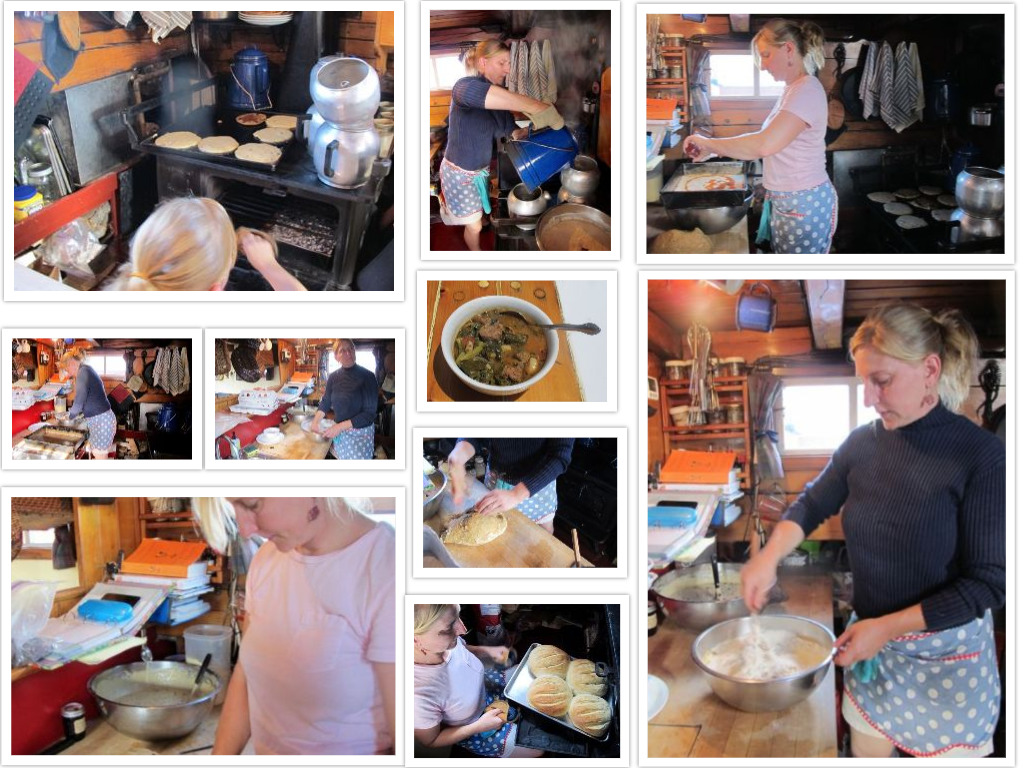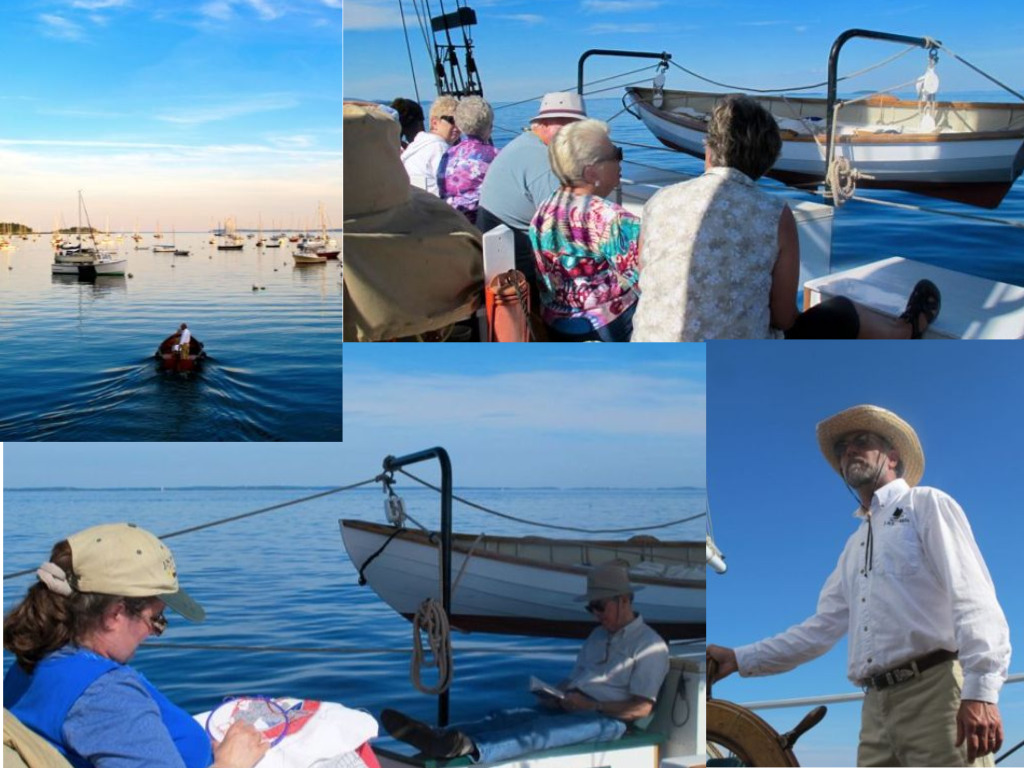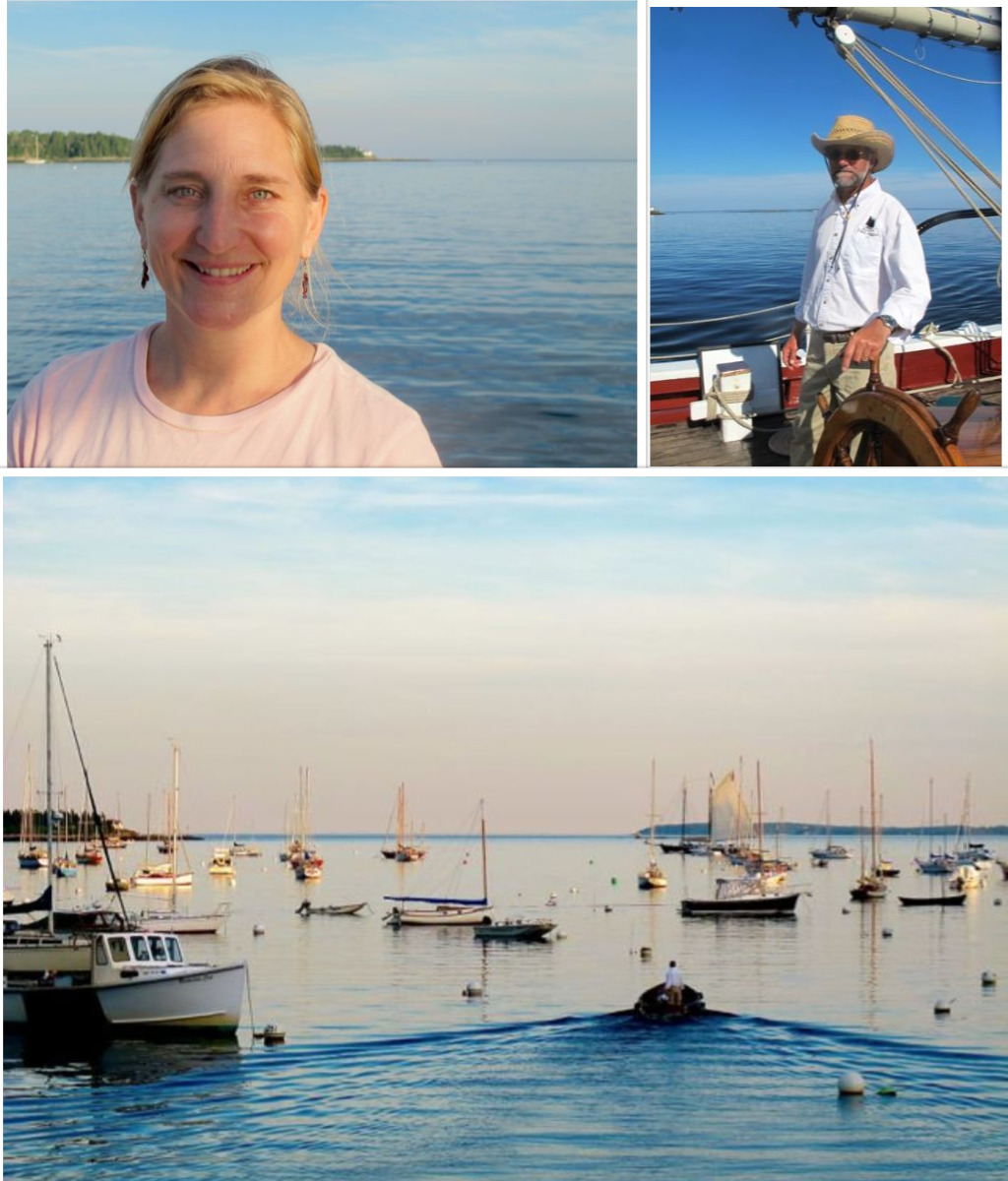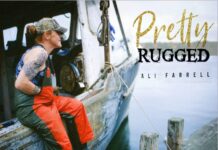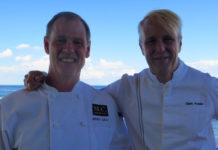
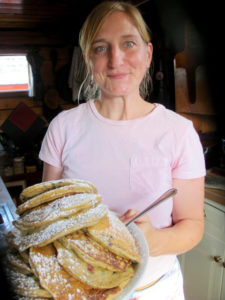
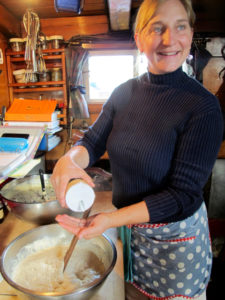
Meet Annie Mahle, chef aboard the J & E Riggin, a wooden schooner built in 1929 as an oyster dredger and now listed as a National Historic Landmark. Annie owns this Maine windjammer with her husband, Capt. Jon Finger (see my Q&A with him, here).
An accomplished chef, Annie’s also an author, and her books include a new edition of At Home At Sea, her first cookbook, and two Sugar & Salt cookbooks, Book One, The Blue book, and Book Two, The Orange Book. Mahle works most of her cooking magic in a two-square-foot space defined by a wood-burning cookstove, a woodblock counter, and open shelving, and she does so without electrical power.
I first met Annie a few years back, when writing an article about cooking in tight spaces for BonAppetit.com. I caught up with her recently to chat about Maine windjammers and the new edition of At Home At Sea.
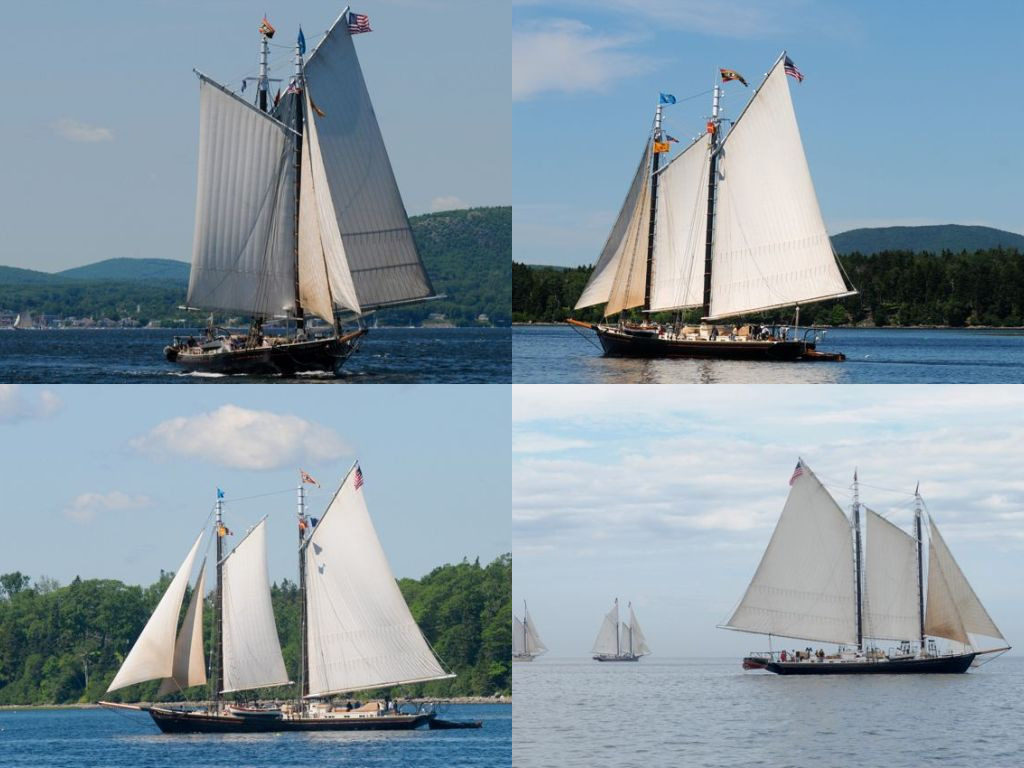
Why sail aboard a Maine windjammer?
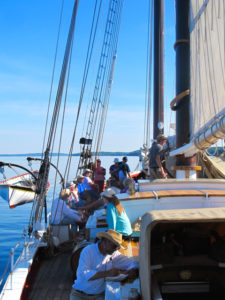
Maine windjammers sail mostly in and around mostly Penobscot Bay and are self-defined as offering multi-day sailing trips. The experience is at once exciting and an adventure; something that’s away and different from everyday life. These are all reasons why people go on vacation.
Why specifically a windjammer? We’re talking about discovering some of the most pristine and special waters in the world. You can’t find this collection of historic vessels anywhere else in North America, if not the world.
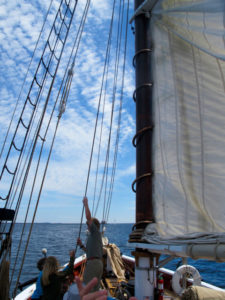
The wonderful thing about being technologically disconnected, unplugged, is that someone else is nurturing you with amazing local food. The day goes by and you literally do not have a care because someone else tending things for you. Do I want to read my book, watch scenery, help out in the galley, be still and knit? Your time is all about you; not beholden to all the demands, multitasking, needing to get back to people.
It’s nurturing in the food and also just being outside in nature. You connect to a different rhythm; the heartbeat of nature rather than that of technology.
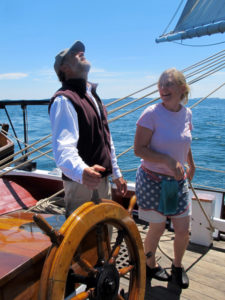
The reasons why 70 to 80 percent of the people who sail with us come back are: Jon & I, the food, and the music. We pay a lot of attention to the hospitality piece, the relationship piece, and the food piece of those who come to sail with us. We’re delighting and educating, offering so many choices in the food, all of which grown in my garden or from our CSA (Community Supported Agriculture), it’s local in one way or form. Sometimes the simplest of things can be super flavorful.
We’re a husband and wife team, so we’re both in hospitality. I’m in the galley, Jon runs the boat, and we’ve both been doing that for years and years. You get all of this amazing food, and you’re safe. We’re visiting places that are going offer the best possible experience.
Don’t let your fear of seasickness or what might get in the way of your adventure. We’ll take care of you. You’re going to be safe, well, happy, rested and nourished, and go home having had an amazing experience. Don’t let your worries stop you from something so cool.
Sailing aboard a windjammer is a cross between a B&B and camping on the water. Know yourself, and delight in the weather we have rather than what you wished we had.

What are some of your favorite anchorages for the Riggin?
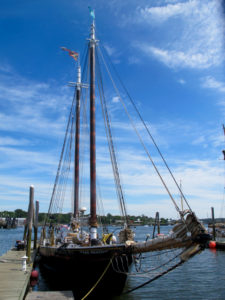
Anywhere in Penobscot Bay!
Pulpit Harbor is a favorite of mine, one that we see often cause it’s close to home and safe with wind directions. I love coming in with osprey nest on one side, a field of lupine, another of rosa rugosa—that you can smell those off land is really amazing. It’s a really picturesque harbor.
I like anchoring off of Warren Island. I love circumnavigating that island on foot. It’s comfortable for people to walk around, and it’s a good distance of people to be able to walk.
I also like anchoring off of Marshall Island. The steep beech with smooth multi-colored stones is so unusual.
And I love Burnt Coat off of Swans Island. I like the sounds of the lighthouse and the horn off of Hockomock Ledge.

What are the joys of preparing meals on a windjammer?
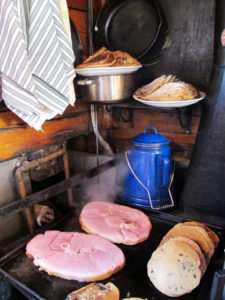
We grow a lot of food in our own garden and order big animals— lambs, cows, pigs—for the freezer. I do a lot of canning and freezing of fruit so I can use it when it’s not in season the following year. At the same time, it’s all about the freshest ingredients.
I love taking whatever comes out of the garden that morning and turning it into something special for passengers, and walking up to the refrigerator, pulling out ingredients, and creating something special with what I have on hand. Have some leftover this or that and something fresh from garden over here. I love pulling the together of ingredients to create burst of flavor in people’s mouths.

Really, I don’t do a lot ahead of time. There is no work-ahead; I have to make it all right now, that’s why it tastes so good: That bread came out of the oven an hour ago, that soup I just mad this morning. It’s as fresh as can be.
I love to make bread and to work with different vegetables. As we began to grow more and more in my own garden and get CSA shares, I realized a lot of people think of vegies as an afterthought. To me the vegies are just as harmonious, center stage, and just as important as a main protein. When you add vegies you’ve really thought about, it can make a meal sing.

What about the challenges?
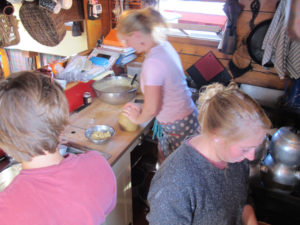
Special diets used to be a challenge, but I’ve changed my menu a ton over the course of years. It used to be fewer dishes, with all ingredients all in one dish. Now, if I’m going to make something, Asian tacos for example, everything is separate: meat/vegies/gluten etc. The challenge is making sure none of the utensils touch anything else, especially for an allergy. It’s one thing if it’s a sensitivity, another if it’s an allergy.
I’ve really started to look at the desserts I serve so I can have a naturally, gluten-free ones, such as pavlovas and flourless chocolate tortes. I’m not in love with a lot of the gluten-free flours; they always feel like a poor substitute. There are really good recipes, but I don’t like the texture of some of those flours.
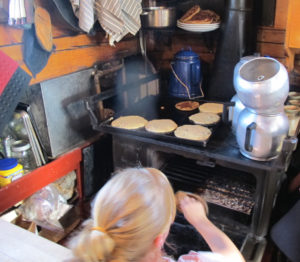
Honestly, cooking aboard a windjammer has some of the same challengers as a regular kitchen—timing, resources, ingredients—but then you add a wood stove, a source of heat that fluctuates and requires more tending than just turning on a burner; dealing with the wind and what it does to the heat source; and then tilt your kitchen to a 10- to 20-degree angle so things start rolling around.
You’ve got roasts prepared and out on the table ready to go and are just waiting to come into anchorage on a breeze that’s been pretty stable for better part of day. You’re in trusty mode—that’s the first mistake. Then an anchoring breeze picks up at about the time that you have the most food possible laid out and ready to put on the table. Dinner ends up on galley floor. And in those circumstances, of course when the roast ends up on floor, it’s a huge challenge: Nobody panic, what are we doing now? Guests rely on us to create something fantastic.
There’s a phrase on a schooner: Always bring extra, because you never know. It’s not like you can just zip off and re-stock, run to the grocery store, or call Domino’s pizza. The response is part of the skill set of cooking in galleys: Do your best not to have it happen; when things do go wrong, spend a fraction of time on what didn’t go as planned, instead concentrate on what to do now; improvise. Improvising goes for everything, it’s a major skill: If we don’t have it, we don’t need it.
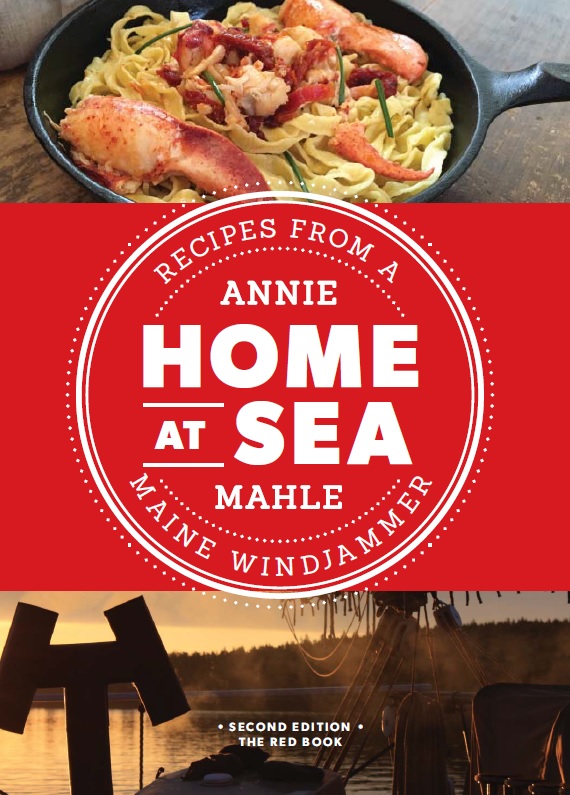
Speaking of improvising, what drove you to update and release a second edition of your first book?
The reason we did a second edition is that the way I cook has changed so much. My first impetus for doing it was: How did you do that? I use the book all the time, but so often I make changes. The basic recipe is in first book, but in this edition, I take the base recipes and do all kinds of variants on that base. I explain what I created instead, such as turning a bar into a pie to create something swankier, or five different variations of a biscuit.
Especially if you know a recipe, you might think about how you could make a substitution and have it be okay or even better than the original. Recipes are a guide; this helps readers understand how to use them as a guide.
I often ask returning passengers if they want something that they had on a previous cruise. They always reply: “Anything you make, I want you to make it.” I’m honored by that trust in that “whatever comes out of your galley I want.“
Annie Mahle kindly shared three recipes, find them here.
—
You can order Annie Mahle’s cookbooks through the Riggin’s website.
